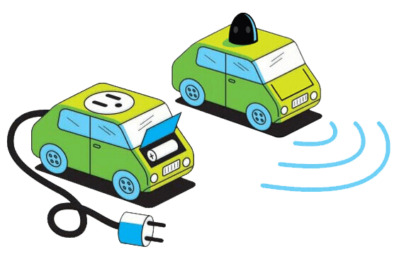 Together with Philip Tetlock and his team at Good Judgment Inc. (GJ), PVMI embarked in the fall of 2015 on the design and execution of a technology forecasting tournament focused on electric and autonomous vehicles. Led by John Paul MacDuffie and Rahul Kapoor, its objective was to learn more about the likely trajectory of these emerging technologies using the wisdom of the crowd.
Together with Philip Tetlock and his team at Good Judgment Inc. (GJ), PVMI embarked in the fall of 2015 on the design and execution of a technology forecasting tournament focused on electric and autonomous vehicles. Led by John Paul MacDuffie and Rahul Kapoor, its objective was to learn more about the likely trajectory of these emerging technologies using the wisdom of the crowd.
Overall, far from being a “tipping point” year for EVs, 2016 was instead a year of reality not matching EV advocates’ optimism, as shown by the disappointing (relative to expectations) sales figures, lack of legislative action in the U.S., and less-than-expected impact of EV subsidies in Germany. The most positive trends for EVs are that battery costs are dropping relatively quickly and that Chinese government policy plus investments by Chinese domestic OEMs and entrepreneurs are fueling continued steep growth in EV sales.
In contrast, three of the four questions regarding autonomous vehicles resolved in ways that suggested significant progress in a short time frame. The answer to a fourth question about Google announcing the public testing of its fully autonomous vehicles before 2017 turned out to be a “no.” But then on April 25, 2017 Google did announce its first public testing program for residents in Phoenix, Arizona. Progress in autonomous vehicles in the short-run has been swift, with all major players making significant advances and with policymakers starting to allow autonomous vehicles to operate on public roads.
Launching the Challenge
Launching this “Disruptions from Vehicle Innovations Challenge” involved three phases.
- In the first, we worked closely with the team from GJ to identify relevant topics around technology, auto firms, and policy, and to design short-term questions to help identify the overall long-term trajectory in demand for electric vehicles. The key was to balance the relevance of the question with the rigor required to resolve the question unambiguously.
- The second phase kicked off with the launch of the Challenge on Good Judgment Open. The launch occurred on Earth Day 2016, with six initial questions about electric vehicles. Over the next several weeks, we added new questions to keep the forecasting community engaged.
- For the third phase in August 2016, we broadened the challenge to include four new questions on autonomous vehicles (AVs), building on the enormous excitement around rapidly-advancing developments with this technology.
Challenge Results
The Challenge closed on January 1, 2017. The 13 questions ultimately attracted 1,530 forecasters who made over 9,500 forecasts on the questions detailed below. We also asked two open questions regarding events that might drive technological innovation in the auto industry in 2017, and suggestions for questions to help predict the future of EVs.
Soon after January 1, 2017, we resolved all the questions from verifiable sources and reported results to the forecasting community. We provide performance results so forecasters can get feedback on how they performed on the challenge. We also analyze the forecasting data (both quantitative and qualitative) to identify the trends and the basis for predictions made by the forecasters.
We’ve built on what we learned in this Challenge to capture a broader range of positive and negative indicators for the next Challenge, which is now live on GJ Open. Join us!



